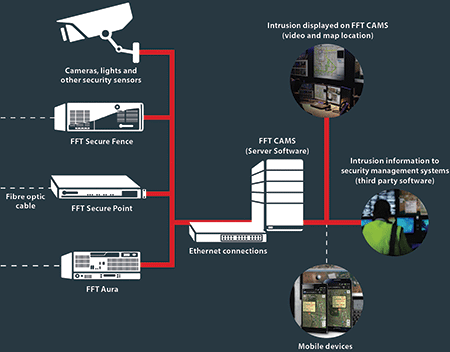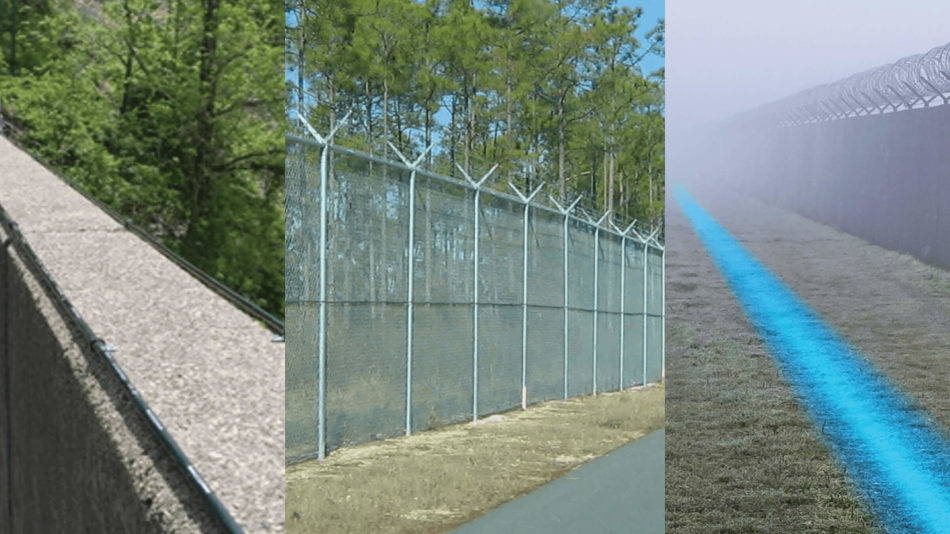How Fiber Security Helps Prevent Unauthorized Access and Boosts Monitoring
Enhance Your Safety With Advanced Fiber Optic Safety And Security Systems
In a period where protection is extremely important, advanced fiber optic safety and security systems present an engaging remedy for improving security across various atmospheres. These systems not only boast superior bandwidth and speed for high-resolution monitoring yet also use impressive strength against external disturbances. As organizations progressively look for reliable means to secure their properties, the assimilation of cutting-edge innovations like AI and IoT within fiber optic structures elevates essential questions about their performance contrasted to traditional systems. What implications do these innovations hold for future security procedures?
Benefits of Fiber Optic Protection
Using the advantages of fiber optic innovation significantly boosts safety and security systems across numerous applications. One of the main benefits is the enhanced data transfer capability, permitting the transmission of large amounts of information at broadband. This is particularly essential for real-time video surveillance, where high-resolution feeds can be sent without latency, making sure instant response abilities.
In addition, fiber optics show exceptional resistance to electromagnetic disturbance, which is crucial in atmospheres with possible signal disruptions. This integrity makes sure consistent efficiency in crucial safety operations. Fiber optic wires are less susceptible to touching and unauthorized gain access to compared to standard copper wiring, thereby enhancing data honesty and confidentiality.
Another significant advantage is the longevity of fiber optic systems; they are extra resistant to environmental elements such as dampness, temperature level variations, and harsh compounds. This resilience equates to reduce upkeep costs and longer life expectancies for protection installments.
Lastly, the light-weight nature of fiber optic cords facilitates much easier installation and routing, particularly in complicated facilities (fiber optic security system). Ultimately, the assimilation of fiber optic technology right into protection systems not just strengthens security procedures however likewise maximizes functional efficiency
Trick Features to Consider
When evaluating fiber optic protection systems, a number of key functions have to be taken into consideration to make sure ideal performance and effectiveness. Evaluate the system's discovery variety and sensitivity; an extensive array enables for monitoring large areas, while high level of sensitivity makes sure that also minor disturbances are identified immediately.
Following, consider the assimilation capabilities of the system. A fiber optic safety system must perfectly user interface with existing protection actions such as electronic cameras and alarms, creating a natural safety and security network.
Sturdiness and ecological resistance are also important functions. Guarantee that the system is created to withstand extreme climate condition and prospective physical threats, as this will certainly extend its operational life expectancy.

Finally, explore the scalability of the system. A robust fiber optic safety system must be conveniently expanding to fit future needs without significant overhauls. By carefully thinking about these features, you can select a fiber optic security remedy that boosts security and safety in your setting.
Installation Refine Introduction
To successfully carry out a fiber optic protection system, a methodical installation process is vital. This procedure begins with an extensive website assessment to figure out the details security demands and to identify optimal places for fiber optic cables and security tools. Following this analysis, the installation team will create a detailed strategy, consisting of cable pathways, necessary tools, and compliance with neighborhood laws.
Following, the installation involves laying the fiber optic cords, ensuring they are safeguarded from environmental elements and physical damage. Proper handling strategies are vital, as fiber optic cable televisions are sensitive and can be quickly harmed. After the cabling is installed, ports and terminations are thoroughly finished to make certain signal integrity.
The succeeding stage contains installing protection tools such as cameras, movement detectors, and alarm, all incorporated with the fiber optic network. Strenuous testing is performed to verify that all elements are operating appropriately and to make certain ideal efficiency.

Comparing Fiber Optic to Typical Equipments
The evolution of safety and security technology has actually brought about significant advancements in the contrast between fiber optic systems and typical copper-based systems. Fiber optic systems use light to transmit information, using exceptional bandwidth and speed compared to their copper counterparts. This leads to enhanced data transmission capabilities, making optical fiber suitable for high-resolution video surveillance and real-time tracking.
Furthermore, fiber optic cable televisions are immune to electromagnetic disturbance, lowering the probability of signal destruction caused by external factors. This characteristic makes certain regular performance, also in tough settings. On the other hand, typical copper systems are more susceptible to disturbance, resulting in prospective vulnerabilities in safety applications.
Resilience is another advantage of fiber optic systems. They are much less prone to damage from ecological factors such as wetness and temperature level fluctuations, which can endanger copper circuitry. Furthermore, fiber optics are lighter and thinner, permitting much easier installment and decreased physical footprint.
Nevertheless, standard systems tend to have reduced first prices, making them eye-catching hop over to these guys for budget-conscious tasks. While fiber optic systems might call for a higher in advance investment, their lasting advantages-- such as lower maintenance prices and greater reliability-- commonly outweigh the initial expense, positioning them as a superior option for contemporary safety and security demands.
Future Fads in Safety And Security Technology
Arising fads in protection technology are positioned to change the landscape of surveillance and danger discovery - fiber optic security system. As companies progressively deal with advanced risks, technologies such as expert system (AI) and artificial intelligence (ML) are coming to be indispensable to safety systems. These modern technologies boost the ability of fiber optic systems by enabling real-time data analysis, identifying anomalies, and automating reactions to prospective breaches
Additionally, the assimilation description of the Internet of Things (IoT) is transforming security structures. IoT devices can supply extensive situational awareness and assist in smooth communication in between different safety parts. This interconnectedness permits extra reliable surveillance and faster event action times.
Biometric authentication is likewise acquiring momentum, offering a greater level of safety with one-of-a-kind physical features. As this modern technology develops, it is likely to be included right into fiber optic systems for improved gain access to control.
Verdict
In conclusion, progressed fiber optic safety and visit this website security systems stand for a substantial innovation in safety and monitoring innovation. Their remarkable bandwidth, resistance to disturbance, and toughness facilitate reliable tracking and data integrity. As these systems incorporate AI and IoT capacities, they enhance the general security structure, ensuring robust security for properties. The change from traditional systems to fiber optic remedies reflects a growing pattern in the direction of extra effective and reliable protection procedures in an increasingly intricate technological landscape.